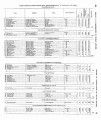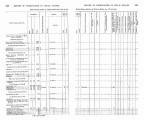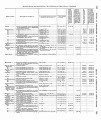| Title |
Annual Report of the Commissioner of Indian Affairs - 1873 |
| Subject |
Indians of North America; Federal government; Indian reservations; White people--Relations with Indians; Land use; Crime; Courts; Alcohol; Indians of North America-Education; Hunting; Gathering; Food; Agriculture; Employment (Economic theory); Work; Education; Indians of North America--Education; Religion; Language and languages; Indigenous peoples--North America |
| Keywords |
Indian Agency; Reservations; Annual Report; Indian; White Relations; Inter-tribal Relations; Land Rights; Resources; Gathering; Kanosh; Native Americans |
| Publisher |
Digitized by J. Willard Marriott Library, University of Utah |
| Tribe |
Ute; Paiute; Goshute; Shoshone |
| Language |
eng |
| Description |
Excerpts concerning Utah from the Annual Report of the Commissioner of Indian Affairs - Courtesy of the University of Wisconsin Digital Collections. The Commissioner of Indian Affairs discusses the importance of education among the Indians, inter-tribal warfare, land leasing, and the dispatch of a mission to gather information on the Utes. Special Commissioners J.W. Powell and G.W. Ingalls describe Kanosh's efforts to help his people cultivate the soil and question treaty provisions. The Commissioner discusses council meetings held at St. George, Utah and Elko, Nevada pertaining to crop cultivation and land use |
| Type |
Image/StillImage |
| Coverage |
Uintah and Ouray Indian Reservation (Utah); Utah; Washington (D.C.); Saint George (Utah) |
| Format |
application/pdf |
| Rights |
Digital Image © 2011 America West Center. All Rights Reserved |
| ARK |
ark:/87278/s63b8vvg |
| Creator |
Commissioner of Indian Affairs; Ingalls, George W., 1838-1920; Powell, John Wesley, 1834-1902 |
| Date |
1873 |
| Spatial Coverage |
Salt Lake City (Utah); Saint George (Utah); Nevada; Uintah and Ouray Indian Reservation (Utah); Utah; Washington (D.C.) |
| Setname |
uaida_main |
| ID |
368960 |
| Reference URL |
https://collections.lib.utah.edu/ark:/87278/s63b8vvg |

































































